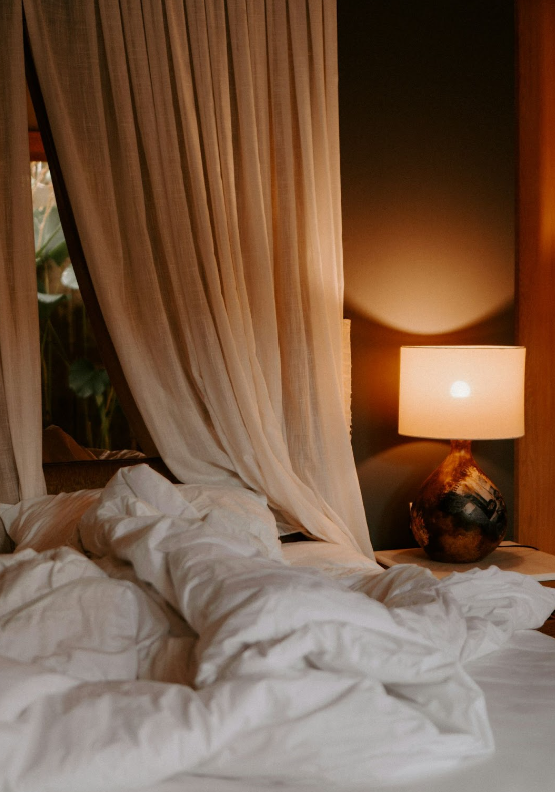Nearly everyone fights the sleep battle at some point in their lives. From tossing and turning to lying there, wide awake and bored, it’s frustrating when sleep eludes us.
Not only will a good night’s sleep keep you in good health, but it can also improve your work and relationships!
While many factors impact your ability to fall – and stay asleep, did you know that your bedroom could be the key to more “zzzs” and less tossing and turning?
The following tips can help you turn your bedroom into a restful oasis that could help improve your sleep.
1. Use calming colors
Color plays a big part in setting the mood of a space. Specific colors have a calming effect on the mind and body. For example, soft neutrals, like pale green or warm beige, create a sense of tranquility.
Cool blues evoke feelings of peace and serenity, while gentle greens promote relaxation and connection to nature.
Don’t stop with the walls. Use these colors throughout your bedroom, such as your bedding and decor. Avoid using bright colors and harsh contrasts, both of which stimulate your mind and impact your ability to fall asleep.
You can use HomeZada to track all your paint colors to help with touch ups over time. A bedroom without nicks or marks on walls contributes to a clean room.
2. Choose Comfortable Bedding
A high-quality mattress and pillows that support your head and neck are essential additions to your restful room.
Look for memory foam or hybrid mattresses offering pressure relief and body contouring options. Pillows should support your head and neck alignment, which can provide a more restful sleep.
When it comes to your bedsheets, choose natural and breathable fabrics like cotton or linen. These fabrics regulate body temperature, preventing you from overheating during sleep.
3. Eliminate clutter
You might be surprised at how clutter impacts your sleep. An environment filled with clutter can make it hard to relax, which is an important precursor to falling asleep. Go for a minimalist design style in your bedroom.
Declutter surfaces, remove furniture you don’t need or use and invest in storage solutions such as under-bed storage bins.
4. Use Soft Lighting
Harsh overhead lighting can disrupt your circadian rhythm, impacting your sleep. To create a more relaxing atmosphere, choose bedside lamps with warm white bulbs that are perfect for reading before going to sleep.
Invest in blackout curtains to prevent unwanted light from disturbing your sleep. This can help regulate your sleep-wake cycle and ensure a good night’s rest.
By creating a relaxing sleep environment, you can unlock the benefits of quality sleep and wake up refreshed and ready to take on the day.
Remember, a good night’s sleep is an investment in your overall well-being, and a well-designed bedroom retreat is the perfect starting point.
Benefits of Installing Window Blinds in Your Bedroom


